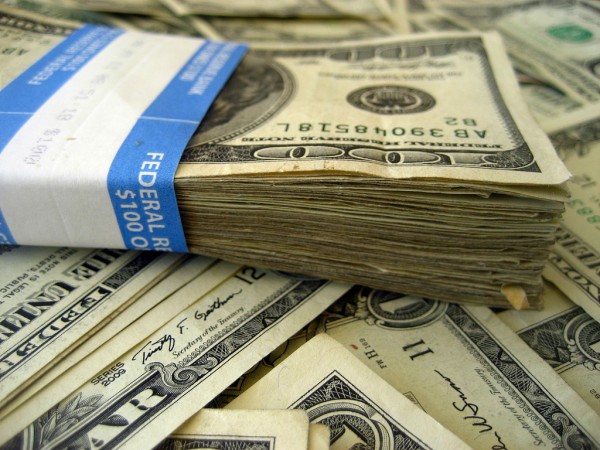
SUNY and CUNY faculty sparked controversy on college campuses statewide after urging the New York state senate to renew 2011’s NYSUNY2020 legislation.
NYSUNY 2020 entails staggered “rational tuition increases,” which supporters of the legislation say will help students and their families plan for increasing college expenses. The legislation authorizes tuition increases of up to $300 per year, depending on future shifts in taxpayer funding toward higher education. NYSUNY 2020 also incentivizes long-term development plans for each of SUNY’s 64 campuses.
The legislation has gained the support of New York state Gov. Andrew Cuomo, who wants to renew the plan for another five years, according to a news release from The Statesman. The SUNY student assembly and the faculty senate have also come out in favor of NYSUNY 2020.
However, students across the state voiced their opposition to the legislation’s renewal loud and clear. Activists at a number of SUNY schools, including the University at Buffalo, SUNY Purchase, the University at Albany and SUNY New Paltz, walked out of their classes to protest potential tuition hikes. New York Students Rising (NYSR) led the walkouts, which were coordinated simultaneously around noon on Friday, March 4. At New Paltz, protesters barricaded Main Street, spouting rally cries like, “Raise hell, not tuition!” and “Fight, fight, fight, fight, education is a right!”
Fourth-year graphic design major Nicole Striffolino helped organize NYSR’s walkout. According to Striffolino, NYSR’s platform calls for greater contributions from the state to SUNY’s funding. NYSUNY 2020’s rational tuition increases place the burden of funding higher education on the students’ shoulders, she said. This has detrimental effects on students statewide: increasing the price tag of high education limits its accessibility, particularly to people of lower socioeconomic statuses. Inaccessibility like this ends up disproportionately affecting people of color, preventing them from obtaining higher education, she said.
“[It’s] extremely problematic, especially in a state where education is the key to social mobility,” Striffolino said.
These tuition hikes make the burden of student loans — a reality many students in New York know well — even heavier. National student debt recently surpassed $1.3 trillion, Striffolino said, which she believes will have a profound impact on students like herself, who racked up more than the national average of $25,000 in student loan debt over the course of their four-year education.
“Student loan debt is a political tool,” Striffonlino said. “It’s a way to keep the youth tied down to books, jobs and stress so that they don’t have time to question the injustices of society or at least don’t have the time to act against them.”
New York policymakers from the House of Representatives responded to NYSR’s demands and SUNY students’ activism with a bold move: rejecting the renewal of NYSUNY 2020 and pressing for a two-year tuition freeze in their 2016 budget.
Assemblymen Kevin Cahill and James Skoufis came to campus on Friday, March 11 to advocate for their cause at a press conference. NYSR members hailed the support of the state assembly as a victory for SUNY students — and a clear sign that the lawmakers in Albany are listening to students’ voices.
“The dramatic tuition increase that you experienced did not produce the dramatic result that was intended,” Cahill said of NYSUNY 2020’s impact since 2011. “New York state must be held to keep its promise.”
According to Kelsey Ryan, a fourth-year international relations major and member of the New Paltz NYSR team, the assembly’s support means everything. Now, the future of NYSUNY 2020 hinges upon support from the state senate: if both houses reject NYSUNY 2020, Gov. Cuomo would be hard-pressed to sign off on their decision, Ryan said.
“I’m so confident about the student pressure we are making,” she said.
In regards to the controversy surrounding NYSUNY 2020, SUNY New Paltz President Donald Christian said he empathizes with students’ concerns over the costs of their education. But with passing time comes increased costs, he said, and if New Paltz wants to offer the same services to its students year after year, the school will need more funding.
Christian also shared his concern over misrepresentations in the media of the legislation’s effects. While some protesters have told media outlets that the gradual tuition increases haven’t impacted their education, Christian said that this is far from the truth. According to Christian, the college has hired 45 more faculty members since 2011 and invested in important resources for students, such as psychological counseling and veteran services. Class sizes have actually decreased, contrary to reports from some student activists, he said.
Like Striffolino and NYSR, Christian and his team are in favor of increased state contributions to higher education. According to Christian, 77 cents of every dollar New Paltz has to educate students currently comes directly from students’ tuition. This makes colleges and universities more sensitive to fluctuations in enrollment numbers, which forces administrators to pay closer attention to meeting enrollment targets. For other SUNY schools that routinely struggle to meet enrollment numbers, a heavy reliance on tuition dollars can be a big hassle.
“My nightmare is that we will get neither tuition increases, nor taxpayer support,” Christian said. “We [would] have to eliminate a major, or increase class sizes, or do something drastic and make some very difficult decisions.”
